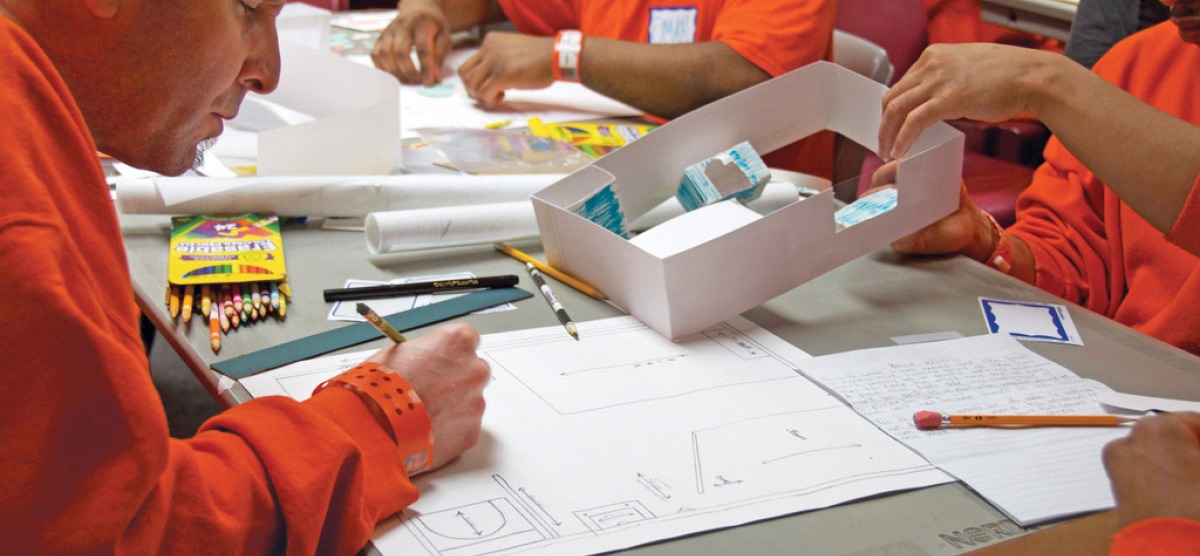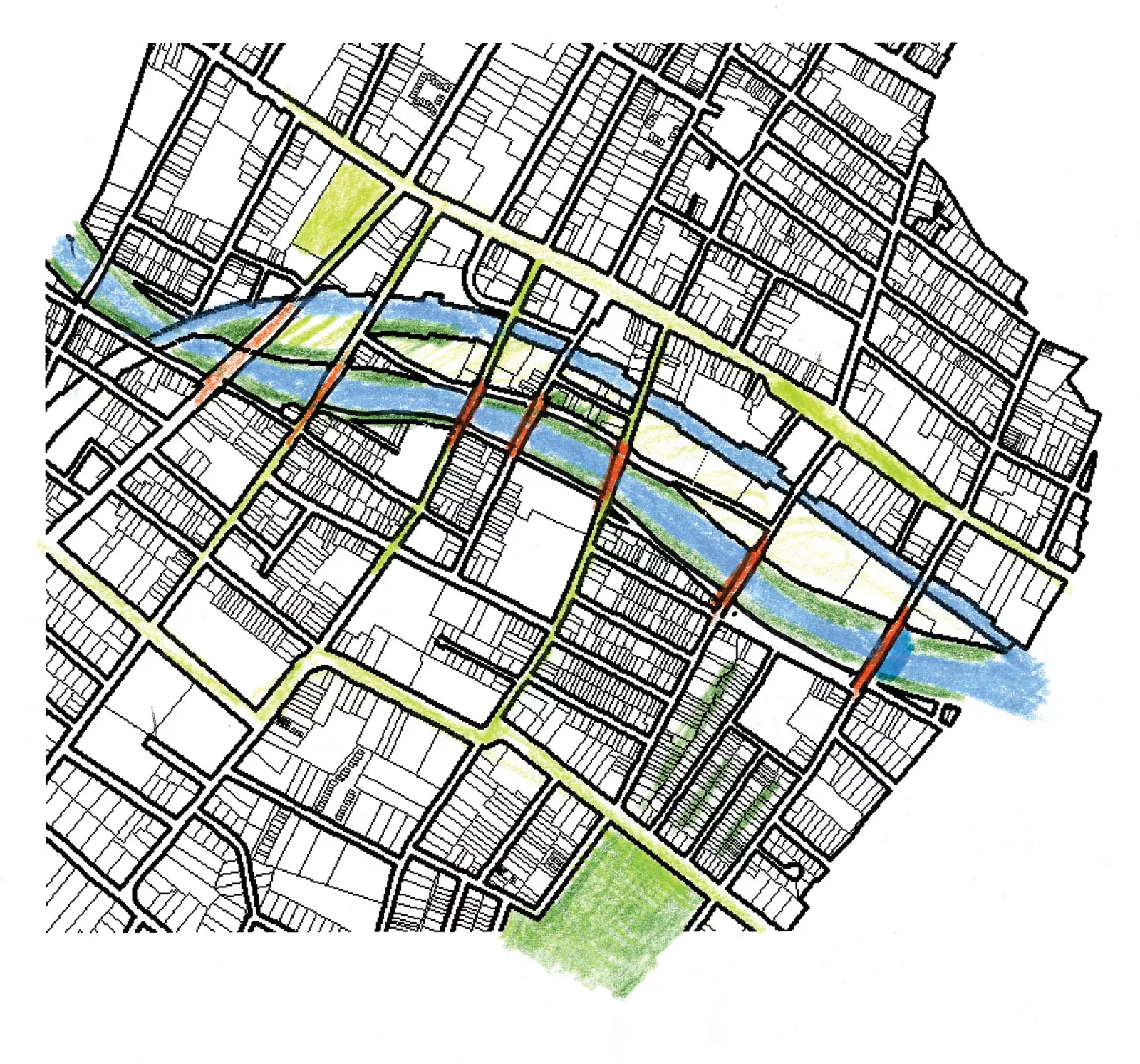
Design and Justice
Three alumnae explore how we think about the physical landscape, incarceration, and literacy.
Can design—architecture, graphic design, city planning—ameliorate social inequality? Last year, Cooper Hewitt Smithsonian Design Museum set out to investigate that question with a thoughtful exhibition. No surprise that By the People: Designing a Better America featured contributions by a trio of Mawrters.
A Magic Strategy for the Healthy City
Mindy Thompson Fullilove ’71 served on the exhibit’s advisory committee and co-wrote The Aesthetics of Equity: A Magic Strategy for the Healthy City for the catalog. It outlines the work of the Cities Research Group, which Fullilove helped found in the 1990s to better understand the myriad health epidemics ravaging low-income communities of color across the country—AIDS, crack cocaine addiction, violence, and more.
The following excerpt describes a watershed moment when the group realized how physical changes to the landscape of Orange, N.J., were affecting citizens:
William Morrish, a professor in the Design and Urban Ecologies program at Parsons, The New School for Design, describes “naming and framing the problem” as the first step of design. Our first consultant was Michel Cantal-Dupart, who came in 2009 to examine the issues in the center of town. He studied the area carefully, walked it with residents, examined historical maps, … and presented us with an unexpected observation. The 1960s division of the city by the construction of a freeway—the highway later known as Route 280—was understood by all of us. But Cantal pointed out that a shift in the train line had also contributed to the fracture of the center of the city, creating a deteriorating island of buildings. “Look,” he said to us. “It is as if there are two rivers—the train and highway. In Paris we have an island like this. We call it Isle de la Cité, and it is a very popular spot. You should rethink your City Island, beautifying the ‘river banks’ and reconnecting the north and south.“
He used his blue colored pencil to show us how the train and the highway were rivers. Suddenly, City Island leapt off the page, giving us a new perspective on the city.
The role of the train line in the division of the city was revisited by William Morrish. He and his students helped us to understand that New Jersey was in the middle of a spurt of transit-oriented, ‘smart’ growth that was pushing massive construction around train stations. In other cities, like Harrison, New Jersey, the new construction was completely unrelated to the historic city’s contents and form. A post-industrial city like Orange, Harrison was inhabited by working people who lived near the now-empty factories that once provided a good living. These were being bulldozed and replaced by luxury apartments for people who could take the train to work in New York City.
“This kind of development,” Morrish told us, “focuses on a rail corridor and ignores the rest of the city. This will displace the poor and intensify the fracture that you’re trying to repair. What you want to help people understand is that there is a larger city to restore, there are many modes of transportation, and there is much opportunity for creating jobs in Orange so that people don’t have to commute. You have the opportunity to carry out a real and effective urban restoration, not this latest form of urban renewal.”
Designing Justice+Designing Spaces
“Mass incarceration is a major social problem, as is the overuse of punishment generally,” says Barbara Toews, Ph.D. ’14 (GSSWSR), co-founder of the DJ+DS initiative to explore the relationship between restorative justice and the design of justice spaces. “The result is that those who commit crime rarely understand the true consequences of their actions and victims rarely receive justice in a way that addresses their needs.”
DJ+DS uses design to challenge how we think about justice, justice practices, and the spaces needed to accommodate those practices. The group works with incarcerated men and women to create new types of justice spaces that are inspired by the restorative justice philosophy. Its contribution to By the People included 3-D paper models and a perspective drawing of several of their design concepts.
Field Guides to Ensure Voter Intent
Led by Whitney Quesenbery ’76, the Center for Civic Design and its partner Oxide Design contributed a set of 10 pocket-sized books containing design guidelines and best practices for ensuring voter intent. “Election officials are unacknowledged designers,” says Quesenbery. “They create letters, forms, notices, and ballots, but most don’t understand civic design and how to meet the varying literacy needs of the general population. The field guides help officials bridge that gap to create tools that voters can really use.” Titles include Designing Usable Ballots, Designing Election Department Websites, and Effective Poll Worker Materials.
The Contributors
A research psychiatrist at New York State Psychiatric Institute and professor of clinical psychiatry and public health at Columbia, Mindy Fullilove ’71 is an expert on participatory design. The author of Urban Alchemy: Restoring Joy in America's Sorted-Out Cities, she can currently be seen in Citizen Jane: Battle for the City, a documentary about the urban activist Jane Jacobs.
An expert in user research, user experience, and usability, Whitney Quesenbery ’76 is a principal consultant at Whitney Interactive Design. She has served as chair for Human Factors and Privacy on the Elections Assistance Commission Advisory Committee, creating requirements for voting systems for U.S. elections. She co-authored Storytelling in User Experience Design, with Kevin Brooks.
A practitioner and educator in restorative justice, Barbara Toews, Ph.D. ’14 (GSSWSR), studies the relationship between environmental design, especially that of correctional institutions, and psycho-social-behavioral and judicial outcomes. Publications include Critical Issues in Restorative Justice, with Howard Zehr, and The Little Book of Restorative Justice for People in Prison.
Published on: 09/16/2017

